Del Mar Photonics -
Product brochures -
Avionics Europe
Avionics Fiber-Optics and Photonics Conference -
Request a quote for Fiber-Optics or Photonics Components
AVF 2008 2008 IEEE Avionics Fiber-Optics and Photonics Conference
Advance Program
Tuesday, 30 September 2008
ALL SESSIONS TO BE HELD IN COAST BALLROOM
8:00 AM - 10:00 AM
Session TUA: INTRODUCTION/OPENING
Session Co-Chairs: Thomas F. Dermis, US Air Force Research Laboratory, WPAFB,
OH, USA
Rick C. Stevens, Lockheed Martin, Eagan, MN, USA
8:00 AM - 8:30 AM ICE OVERVIEW/OPENING REMARKS
TuA1 8:30 AM - 9:00 AM (Invited)
DWDM Networking Technologies for Avionics Applications, H. Kobrinski, Telcordia
Technologies, Inc., Red Bank, NJ, USA
DWDM is becoming the primary transport technology in telecom networks. Many of
its advantages – primarily scalable capacity - can also be realized over
aircraft platforms. This paper reviews DWDM technologies developed for telecom
networks and their application for aviation platforms.
TuA2 9:00 AM - 9:30 AM (Invited)
Next-Generation Fiber-Optic Technology Enablers for Manned & Unmanned ISR
Platforms, R. Pirich and P. Anumolu, Northrop Grumman Corporation, Bethpage, NY,
USA
This presentation will address the selection and integration of next-generation
fiber-optic technology enablers, such as High Density Fiber-Optic Sensors,
Single Mode/Multi-Mode and High Power Fiber-Optic Rotary Connection Technology,
Fiber-Optics to Excite, Receive and Control T/R Modules and Photonic Switched
True Time Delay (TTD) Beam Forming Networks.
TuA3 9:30 AM - 10:00 AM (Invited)
Photonics for RF Systems, S. A. Pappert, R. Esman, Defense Advanced Research
Projects Agency, Arlington, VA, USA and B. Krantz, Booz Allen Hamilton,
Arlington, VA, USA
This paper provides an overview of state-of-art low noise figure and high
dynamic range RF distribution links and delay lines, low phase noise RF
oscillators, and fast tunable RF filters developed using photonic technologies.
10:00 AM - 10:30 AM COFFEE BREAK
10:30 AM - 12:00 PM
Session TUB: APPLICATIONS/SECURITY
Session Co-Chairs: Mark W. Beranek, US Naval Air Systems Command, Patuxent
River, MD, USA
Praveen Anumolu, Northrop Grumman Corporation, Bethpage, NY, USA
TuB1 10:30 AM - 11:00 AM (Invited)
Electrical, Optical, and Thermal Interconnect Networks for 3D Heterogeneous
Integrated Systems, M. S. Bakir, C. King, D. Sekar and B. Dang, Georgia
Institute of Technology, Atlanta, GA, USA
This paper reports, for the first time, a 3D integrated system that features
wafer-level batch fabricated electrical, optical, and fluidic (or ‘trimodal’)
chip I/O and through-silicon interconnects to enable ultimate performance 3D
systems.
TuB2 11:00 AM - 11:15 AM
Applicability and Recommendation of Optical Reflectometer Technology on Naval
Aircraft, E. Tegge, Harris Corporation, USA
Fault location identification within the fiber optic systems of naval aircraft
currently requires maintenance personnel to break the optical link to insert
test equipment. This procedure changes the configuration which often masks the
failure and exposes the fiber link to additional contamination.
TuB3 11:15 AM - 11:30 AM
Request a quote for Fiber-Optics or Photonics Components
Cost Effective Fiber Optic Physical Layer For Aircraft Utility Networks, L.
Bolton, Ge Aviation, Cheltenham, Gloucestershire, UK
This paper describes development work on a cost effective optical physical layer
for a time-triggered, deterministic utility network aimed at civil transport and
business jet aircraft.
AVF 2008 2008 IEEE Avionics Fiber-Optics and Photonics Conference
TuB4 11:30 AM - 11:45 AM
Bidirectional Link Mock-Up for Avionics Applications, K. Ly, Airbus France,
Toulouse, France, A. Rissons, Institut Superieur de L'Aeronautique et de
L'Espace, Toulouse, France, F. Quentel, M. Pez, D-Lightsys, Marcoussis, France,
E. Gambardella, Airbus France, Toulouse, France and J.-C. Mollier, Institut
Nationale Supérieure de L'Aéronautique et de L'Espace, Toulouse, France
This paper gives the performance of an Avionics Full Duplex link based on 850nm
VCSEL technology. The experimental results of a 100m link representative of real
aircraft-type application are validated according to the IEEE requirements.
TuB5 11:45 AM - 12:00 PM
Incoherent Optical Frequency Domain Reflectometry for Health Monitoring of
Avionics Fiber Optics Networks, G. Ryu, University of Maryland, College Park,
MD, USA and M. Dagenais, New Integration Photonics, Chevy Chase, MD, USA
We present a sensitive, linear and high spatial resolution approach for the
detection of reflections in avionic optical fiber links. A 2 mm spatial
resolution combined with a 70 dB optical dynamic range was demonstrated.
12:00 PM - 1:30 PM LUNCH BREAK
1:30 PM - 2:45 PM
Session TUC: CABLING AND INTERCONNECT
Session Co-Chairs: Vincent J. Urick, US Naval Research Laboratory, Washington,
DC, USA
Rick C. Jones, Lockheed Martin, Fort Worth, TX, USA
TuC1 1:30 PM - 1:45 PM
Air Vehicle Fiber Optic Cable Infrastructure, B. C. McDermott, M. W. Beranek and
M. J. Hackert, US Naval Air Systems Command, Patuxent River, MD, USA
This paper provides the reader with reasoning for re-evaluating the physical and
logical importance of viewing an air vehicle’s fiber optic cabling
infrastructure as a standalone system.
Request a quote for Fiber-Optics or Photonics Components
TuC2 1:45 PM - 2:00 PM
Broken Aerospace Fiber Optic Cable Characterization, M. W. Beranek, US Naval Air
Systems Command, Patuxent River, MD, USA, J. Ahadian, C. B. Kuznia, Ultra
Communications Inc., Vista, CA, USA and B. Pregger, US Naval Air Systems
Command, Patuxent River, MD, USA
The fracture morphology of a kinked aerospace fiber optic cable is consistent
with a test fiber fractured in bending. The fracture was detected by both
optical time and coherent optical frequency domain reflectometry methods.
TuC3 2:00 PM - 2:15 PM
Development of an Optical Fiber Cable Plant for Sixth Generation Avionics
Networks, M. J. Hackert, M. W. Beranek, US Naval Air Systems Command, Patuxent
River, MD, USA and B. C. McDermott, US Naval Air Warfare Center, Patuxent River,
MD, USA
This paper describes the development and current standardization of an optically
transparent, future-proofed cable plant that can support the aerospace
industry's transition to high speed, high connectivity optical networking that
can survive the 25-100 year life of the airframe.
TuC4 2:15 PM - 2:30 PM
Hermetic Fiber Optic Connectors and Feedthrus, M. Evrard, Pacific Aerospace and
Electronics, Versailles, France, France and A. E. Meade, Pacific Aerospace and
Electronics, Wenatchee, WA, USA
Thanks to their specific Kryoflex® ceramic formulation, PA&E has developed a
unique way of providing hermetic fiber optic-to-ferrule contact with a leak rate
= 10-9 atm.cm3.s-1.
TuC5 2:30 PM - 2:45 PM
Optical Wireless Links for Aerospace Applications, D. N. Harres, Boeing Company,
Belleville, IL, USA
The potential use for optical wireless is quite high and is largely untapped in
the aerospace industry. Contrary to experience with consumer use, such as TV
remotes, this technology is extremely powerful when properly implemented.
2:45 PM - 3:15 PM COFFEE BREAK
3:15 PM - 4:45 PM
Session TUD: ANALOG PHOTONICS
Session Co-Chairs: Everett W. Jacobs, SPAWAR Systems Center - San Diego, San
Diego, CA, USA
Request a quote for Fiber-Optics or Photonics Components
John Gallo, Xadair Technologies, Jacksonville, FL USA
TuD1 3:15 PM - 3:30 PM
Laser and Photodiode Requirements for Analog Photonics, V. J. Urick, US Naval
Research Laboratory, Washington, DC, USA, J. Diehl, SFA, Inc., Crofton, MD, USA,
A. S. Hastings and P. S. Devgan, US Naval Research Laboratory, Washington, DC,
USA
AVF 2008 2008 IEEE Avionics Fiber-Optics and Photonics Conference
This paper briefly reviews the laser and photodiode requirements for
high-performance intensity-modulation, direct-detection photonic links. As it is
relevant to ongoing avionic programs, we also report on the performance of an
erbium-glass microchip laser and a high-power partially-depleted-absorber
photodiode for analog applications.
TuD2 3:30 PM - 4:00 PM (Invited)
Increased Dynamic Range for Microwave Photonic Links, A. Karim and J. Devenport,
L-3 Photonics, Carlsbad, CA, USA
A microwave photonic link was demonstrated with a spur-free dynamic range (SFDR)
of 71 dB in a 500 MHz bandwidth. A down-converting link was demonstrated with an
SFDR of 64 dB in 500 MHz.
TuD3 4:00 PM - 4:30 PM (Invited)
Wideband RF Photonic Pre-Selector for Dynamic Co-Site Interference Mitigation,
M. Borbath, Harris Corporation, Palm Bay, FL, USA, C. Middleton, J. Wyatt and R.
DeSalvo, Harris Corporation, Melbourne, FL, USA
Antennas in congested RF environments are susceptible to co-site interference.
We present an all-optical technique to mitigate the interfering signal by
generating nulls at specific frequencies. We demonstrate the nulling of an
interfering signal by over 50 dB without attenuating the signal of interest.
TuD4 4:30 PM - 4:45 PM
Request a quote for Fiber-Optics or Photonics Components
A Single-Sideband Suppressed-Carrier Ring Laser Transmitter for Coherent Analog
Optical Links, R. Forber, IPITEK, Carlsbad, CA, USA, G. Zhu, University of
California - Los Angeles, Los Angeles, CA, USA, W. C. Wang, IPITEK, Carlsbad,
CA, USA, B. J. Bortnik, W. Liu and H. R. Fetterman, University of California -
Los Angeles, Los Angeles, CA, USA
We report progress on a single-sideband suppressed-carrier photonic RF
transceiver for high dynamic range coherent analog optical links. This
COTS-based RF link had a measured spurious-free dynamic range of 121 dB-Hz2/3 at
11 GHz.
5:00 PM - 7:00 PM WELCOME RECEPTION
5:00 PM - 7:00 PM
Session P: POSTER SESSION
Session Chair: Mark W. Beranek, US Naval Air Systems Command, Patuxent River,
MD, USA
Milan L. Masanovic, University of California - Santa Barbara, Santa Barbara, CA,
USA
P1 A Pressure Sensing System using Fiber Optic Sensors and Artificial Neural
Networks, X. Jin, X.-H. Yu, S. Zargar, R. H. Patel and S. Wards, Cal Poly State
University, San Luis Obispo, CA, USA
A smart pressure-sensing system which can test dynamic pressure up to 200 psi is
developed. Based on the measurement data from fiber sensors, artificial neural
network is successfully applied for modeling and estimation.
P2 Design and Implementation of Mobile Free Space Optical Communication System,
X. Jin, X. Wang and C. Y. Hsu, Cal Poly State University, San Luis Obispo, CA,
USA
The paper presents a mobile, low power, light weight and low cost 10MHz
free-space optical communication system, which has 50m range. Laser-diodes and
tracking systems are used. The optical link is simulated and tested.
P3 Design and Fabrication of Piezo-Optical Fabry-Perot Voltage Sensor, M.
Mozafari, Niroo Research Institute, Tehran, Iran
We have designed and fabricated a piezo-optical voltage sensor based on Fabry-Perot
interferometer, which can measure AC voltages from 1 to 400 V rms with linear
response. It can be used in Optical Voltage Transducers.
P4 Eliminating Dispersion and ISI in Optical Wireless Environment using Optical
DFT OFDM System, M. Khedr, M. Hussien and M. Tamazin, Arab Academy for Science
and Technology, Alexandria, Egypt
All optical orthogonal frequency division multiplexing is used to achieve high
bit rate and eliminate intersymbol interference in optical wireless
communications. Overall architecture is enlightened and analytical evaluation is
presented for direct and diffused environment.
P5 Bidirectional Video Transmission for Avionics Applications, M. Pez and C.
Hartmann, D-Lightsys, Marcoussis, France
A Single wavelength bi-directional and full-duplex optical links is demonstrated
through a full-duplex video multiplexing transmission. The system, main
performances and limitations are described and compared with avionics
requirements and standards.
AVF 2008 2008 IEEE Avionics Fiber-Optics and Photonics Conference
Wednesday, 01 October 2008
8:30 AM - 10:00 AM
Session WA: OPTICAL COMPONENTS I
Session Co-Chairs: Michael J. Hayduk, US Air Force Research Laboratory, Rome,
NY, USA
Milan L. Masanovic, University of California - Santa Barbara, Santa Barbara, CA,
USA
WA1 8:30 AM - 9:00 AM (Invited)
Wafer Bonded Silicon Photonics, D. Liang, A. W. Fang, H.-W. Chen and J. E.
Bowers, University of California - Santa Barbara, Santa Barbara, CA, USA
We review the most recent progress in the hybrid silicon evanescent platform,
including CMOS-compatible, high-yield, high-efficiency InP-to-Si direct wafer
bonding and the demonstration of distributed feedback lasers and phase
modulators in this platform.
WA2 9:00 AM - 9:30 AM (Invited)
Fiber Optic Requirements for Advanced Platform Integration, R. Pirich, T. Innes
and P. Anumolu, Northrop Grumman Corporation, Bethpage, NY, USA
This presentation will address the need for fiber-optic integration process and
maintainability improvement. For example, the importance of proper endface
preparation will not only optimize optical transmittance, but will increase the
in-service life of the terminus interconnect.
WA3 9:30 AM - 9:45 AM
Photonic Component and Subsystem Reliability Modeling, D. Nicholls, Quanterion
Solutions, Utica, NY, USA, A. Avak, US Naval Air Warfare Center, Patuxent River,
MD, USA and J. S. Mazurowski, Penn State Electro-Optics Center, Freeport, PA,
USA
The use of photonics is becoming a commonplace in the design of modern avionic
systems. Advantages of these systems are that they have high data transfer
rates, are light weight, are small and are immune to electromagnetic
interference.
WA4 9:45 AM - 10:00 AM
Comparing Polymer Optical Fiber (POF), Fiber Bragg Gratings and Traditional
Strain Gauge for Aircraft Structural Health Monitoring, J. Gómez Alonso, J.
Zubia Zaballa, G. Aranguren Aramendia, G. Durana Apaolaza, University of the
Basque Country, Bilbao, Spain, J. A. Illaro, I. Sáez de Ocáriz, Aeronautical
Technologies Center, Vitoria, Spain, M. Kirchhof, H. Poisel and E. Hartl,
University of Applied Sciences, Nuremberg, Germany
This work analyzes if Polymer Optical Fibers (POF) could substitute the
traditional strain gauges that are commonly used in Structural Health Monitoring
(SHM) tests, or the quite recent sensors based on fiber Bragg gratings.
10:00 AM - 10:30 AM COFFEE BREAK
10:30 AM - 12:30 PM
Session WB: OPTICAL COMPONENTS II
Session Co-Chairs: Neal K. Bambha, US Army Research Laboratory, Adelphi, MD, USA
Andrew S. Glista, Liteboard Technology, Annemdale, VA, USA
WB1 10:30 AM - 11:00 AM (Invited)
Miniature Laser Rangefinders and Laser Altimeters, J. Geske, M. H. MacDougal, R.
P. Stahl, Aerius Photonics, Ventura, CA, USA, J. Wagener, US Air Force Research
Laboratory, Eglin AFB, FL, USA and D. R. Snyder, US Air Force, Crestview, FL,
USA
A miniature laser rangefinder/altimeter with a system weight of only 26 grams
will be presented. Performance and new flight modalities enabled for small
unmanned aerial vehicles (UAVs) will be discussed.
WB2 11:00 AM - 11:30 AM (Invited)
Ultra-low Voltage GaAs/AlGaAs Mach-Zehnder Intensity Modulators, J. H. Shin and
N. Dagli, University of California - Santa Barbara, Santa Barbara, CA, USA
Mach-Zehnder intensity modulators in substrate removed very compact GaAs/AlGaAs
optical waveguides having buried electrodes are described. 0.3 V drive voltage
was realized at 1.55 micrometer for 7 mm long electrodes under push-pull
operation.
WB3 11:30 AM - 12:00 PM (Invited)
Mach-Zehnder Quantum Well Modulators for Aerospace Applications, E. T. Kunkee,
R. Davis and A. D. Smith, Northrop Grumman Space Technology, Manhattan Beach,
CA, USA
We provide experimental benchmark data and identify aerospace applications for
which quantum well Mach-Zehnder modulators are well suited. An InP MZM gives a
V-pi of 2.0, insertion loss of 11dB, and bandwidth of 8GHz.
AVF 2008 2008 IEEE Avionics Fiber-Optics and Photonics Conference
WB4 12:00 PM - 12:15 PM
Receiver Architecture for 12.5 Gb/s 16-ary Pulse Position Modulation (PPM)
Signaling, A. J. Mendez, Mendez R&D Associates, El Segundo, CA, USA, R. M.
Gagliardi, University of Southern California, Los Angeles, CA, USA, V. J.
Hernandez and C. V. Bennett, Lawrence Livermore National Laboratory, Livermore,
CA, USA
The architecture of a 16-ary PPM transceiver for 12.5 Gb/s communications in
fiber optic avionics applications is described. The demodulator/receiver design
is based on mapping the optical output to a virtual detector array. Numerical
simulations evaluating the concept are discussed.
WB5 12:15 PM - 12:30 PM
Low Cost, High Data Rate White LED (WLED) Transceiver Demonstration, E. Y. Chan,
D. Koshinz, W. P. Krug, and H. Hager, Boeing Company, Seattle, WA, USA
Due to avionics interest in wireless white LED (WLED) communication, an
experimental implementation of a WLED transceiver by retrofitting low cost COTS
WLED in standard transceiver, error free free-space operation at 10Mb/s is
successfully demonstrated.
12:30 PM - 1:30 PM LUNCH BREAK
1:30 PM - 3:00 PM
Panel: COMMERCIALIZING PHOTONICS IN AVIONICS
Moderator: Michael S. Lebby, OIDA, Washington, DC, USA
This session will briefly describe the panelists company’s capabilities in
optoelectronic technologies. They will explore more efficient ways to support
defense applications in avionics. It is hoped that through discussions, better
alignment can be achieved between defense and commercial sectors.
Michael S. Lebby, PhD, MBA, DEng, CEng
President and CEO
Michael Lebby’s career has spanned all aspects of the optoelectronics and
photonics business ranging from research and development, operations,
manufacturing, and finance, to sales, marketing, and investing. He holds more
than 175 U.S. patents issued in the optoelectronics and photonics field.
Lebby graduated with honors in the UK 1984 and started researching InP-based
optoelectronic integrated circuits at RSRE in Malvern. In 1985, Lebby’s research
took him to AT&T Bell Laboratories photonics research division where he pursued
OEIC-based themes that incorporated both optoelectronic and electronic device
functionalities. In 1989 Lebby took his research studies to Motorola's Phoenix
Corporate Research Laboratory in Arizona. At Motorola, Lebby developed highly
reliable VCSEL based technologies and initiated Motorola’s parallel optics
interconnect program that was called Optobus™. As an R&D leader, Lebby led his
research team to qualify the VCSEL and packaging technology using traditional
Motorola qualification procedures. Lebby broadened his optoelectronic R&D skills
through his role as Business Technology Development Manager in 1997. In this
role, Lebby managed all aspects of advanced technologies in corporate R&D that
included micro-displays, organic LEDs, laser diodes and detector arrays.
In August 1998, Lebby joined AMP (now Tyco) as a member of the Global
Optoelectronics Division's management team. At Tyco he was responsible for
growing the fiber optic datacom and telecom business through external
interactions that included mergers, acquisitions strategic alliances, and
technical strategic planning. Lebby drove Tyco’s return into the 1 Gbps Ethernet
transceiver market based on VCSEL technology. During the summer of 1999, Lebby
joined Intel as a corporate investor and was responsible for sourcing,
negotiating, and closing private placement equity deals in the optical
networking, component, and semiconductor arenas. Lebby participated in a number
of board level activities in the optoelectronics sector.
In January 2001, Lebby founded a new fiber optics company, Ignis Optics, where
he served as the CEO. Lebby led the company to secure multinational customers in
the telecommunications market. Lebby’s team helped define the XFP standard for
10 Gbps transceivers, which gave the company market leadership on a global
level. Ignis Optics was acquired by Bookham Technology in October 2003 and Lebby
became responsible for corporate and technical strategy at Bookham Technology.
Dr. Lebby joined OIDA as Executive Director in early 2005 and was elected as the
new president and CEO of OIDA on February 17, 2006.
In November 2005, Lebby was elected an IEEE Fellow for contributions to
optoelectronics technology, and in November 2007, Lebby was elected an OSA
Fellow for photonics leadership and contributions to VCSEL technology.
Edward Cornejo, Opnext, Inc., Eatontown, NJ, USA
Vice President of Product Marketing
High Performance Communcations in Avionics, E. Cornejo, Opnext, Inc., USA
Request a quote for Fiber-Optics or Photonics Components
ABSTRACT NOT AVAILABLE
Edward Cornejo is responsible for product marketing and strategy at Opnext, Inc.
Prior to joining Opnext, Mr. Cornejo spent more than 15 years in the
optoelectronics industry with Lucent Technologies Microelectronics Division and
AMP, Inc encompassing manufacturing, engineering, product management and
marketing roles. Throughout his career, Mr. Cornejo has been a critical force in
propelling new
AVF 2008 2008 IEEE Avionics Fiber-Optics and Photonics Conference
products to market with several successful product extensions. He has been a key
contributor to IEEE 1G and 10G standards and has been co-founder of some of the
most successful 10G MSA organizations further accelerating market acceptance of
key technologies. He currently serves or supports 40G and 100G special interests
groups, Ethernet Alliance, OIDA and is an IEEE member. Mr. Cornejo has a
Bachelors of Science degree in Electronics Engineering and his Masters of
Science degree in Management from the New Jersey Institute of Technology.
Mr. Cornejo currently serves as a key spokesman for Opnext, Inc. He is active in
all media and industry analyst relations activities. He has also participated in
several industry panel discussions relating to technology and market trends for
higher speed Ethernet, SONET, and WDM.
Ronald T. Logan, Jr., Emcore, Alhambra, CA, USA
Managing Director and Chief Engineer
Hybrid Integrated Photonics Capabilities, R. Logan, Emcore, USA
ABSTRACT NOT AVAILABLE
Ron Logan BIOGRAPHY NOT AVAILABLE
Jan Meise, Finisar, France
Director of Strategic Marketing
Active Optical Cable Needs for Harsh Environments, J. Meise, Finisar, France
ABSTRACT NOT AVAILABLE
Jan Meise has served as the Director of Strategic Marketing for Finisar
Corporation since 2006. Prior to this, he spent five years as the Director of
International Sales also with Finisar. He has held various marketing management
positions with Quicklogic and Future Electronics. Jan earned an MSEE from
Technical University Braunschweig in Germany.
Paul Rudy, QPC Lasers, Sylmar, CA, USA
Vice President of Marketing and Sales
Recent Trends in High Brightness Semiconductor Lasers for Defense and Avionics
Applications, P. Rudy, QPC Lasers, USA
Since their invention, lasers have enjoyed widespread deployment in defense and
avionics platforms for a wide variety of applications such as communications,
navigation, rangefinding, remote sensing, friend / foe identification, target
designation, illumination, bio-chem agent detection, IRCM, ordinance initiation,
and directed energy weapons. Semiconductor lasers are ideally suited for defense
and avionics applications because of their compact size, efficient lightweight
design, and robust operation in stressful environments. Several military
applications have the potential of adopting direct diode sources as a result of
ongoing advances in semiconductor laser technology such as efficiency
improvements, brightness and power scaling, increased spectral stability and
brightness, and extended wavelength range into the visible/UV as well as the
eye-safe and mid-IR regime.
Paul Rudy, Ph.D., is Senior Vice President of Marketing & Sales for QPC Lasers,
Inc. a leading manufacturer of semiconductor lasers for the defense, medical,
industrial, and consumer markets. Prior to joining QPC, Dr. Rudy served as
Director of Marketing at Coherent Inc.’s Semiconductor Business Unit. There, he
led the tactical and strategic marketing activities of the high power diode
laser business, overseeing product management and developing strategies for the
business unit’s technology, products, and markets. Prior to this role, Dr. Rudy
worked as Coherent Inc.’s North American Market Development Manager responsible
for developing and executing sales and tactical marketing strategies for the
corporation’s defense business. Dr. Rudy received his masters and doctoral
degrees in physics from the University of Rochester and earned a B.S. and B.A.
in physics and philosophy with honors from Duke University.
Basil Garabet, EM4, Inc., Bedford, MA, USA
Chief Executive Officer
Photonic Packaging and Manufacturing in Avionics, B. Garabet, EM4, USA
ABSTRACT NOT AVAILABLE
Basil Garabet has a long history of leading successful companies in the optical
communications market. Prior to founding EM4, Inc., Mr. Garabet was the Senior
Vice President of Marketing and Sales for Altitun, an advanced manufacturer of
tunable lasers for DWDM telecommunication applications. While a member of
Altitun's senior management team, Mr. Garabet was responsible for all global
commercialization activities and played a leading roll in the eventual sale of
the company to ADC Telecommunications. Prior to joining Altitun, Mr. Garabet was
the Chief Operating Officer of Melles Griot's Photonics Division, an
international manufacturer and distributor of lasers and photonics components
serving the telecommunications, semiconductor and medical markets. Mr. Garabet
also has experience at Pirelli Cable Corporation where he led the North American
Optical Communication Systems Sales and Marketing Group specializing in WDM and
optical amplifier based systems. In addition, Mr. Garabet held senior sales
management positions at Lasertron and Micracor, manufacturers of IR laser and
detector components.
Mr. Garabet holds a Masters of Science degree in Lasers and Applications from
Essex University in Essex, United Kingdom, and a Bachelor of Science degree in
Applied Physics from Portsmouth Polytechnic in Portsmouth, United Kingdom.
AVF 2008 2008 IEEE Avionics Fiber-Optics and Photonics Conference
Tom Palkert, Xilinx, San Jose, CA, USA
Silicon Photonics in Avionics, T. Palkert, Xilinx, Inc., USA
Request a quote for Fiber-Optics or Photonics Components
ABSTRACT NOT AVAILABLE
Tom Palkert BIOGRAPHY NOT AVAILABLE
3:00 PM - 3:30 PM COFFEE BREAK
3:30 PM - 5:00 PM
Session WC: WDM I
Session Co-Chairs: William P. Krug, Boeing Company, Seattle, WA, USA
Rick C. Stevens, Lockheed Martin, Eagan, MN, USA
WC1 3:30 PM - 4:00 PM (Invited)
Monolithically Integrated Tunable Laser Transmitters for WDM Avionics System,
K.-Y. Liou, Multiplex, Inc., South Plainfield, NJ, USA
We describe InP-based tunable laser transmitters with integrated
electro-absorption modulator at 10 Gb/s for avionic WDM communication systems.
Monolithic chip construction and ultra-compact subsystem integration for
aerospace environment are reported.
WC2 4:00 PM - 4:30 PM (Invited)
Topics in VCSEL-Based High-Speed WDM Optical Interconnects, J. Cheng, University
of Texas at Austin, Austin, TX, USA
Several approaches using wavelength division multiplexing of high-speed VCSELs
to achieve optical interconnects with high aggregate bandwidth are described.
WC3 4:30 PM - 5:00 PM (Invited)
Multi-Mode WDM Transceiver, P. S. Guilfoyle, K. M. Patel, M. T. Harris, U.
Retnasingham, S. Q. Luong, D. Kumar, D. A. Louderback and S. Mahnkopf, OptiComp
Corporation, Zephyr Grove, NV, USA
A transceiver module is presented that is capable of transmitting and receiving
4 wavelength channels. Each channel can be modulated at 2.5Gbps with peak Tx
powers of 6.0mW per channel and Rx sensitivity of -6.5dBm.
Thursday, 02 October 2008
8:30 AM - 9:45 AM
Session THA: WDM II
Session Co-Chairs: Michael J. Hackert, US Naval Air Systems Command, Patuxent
River, MD, USA
William P. Krug, Boeing Company, Seattle, WA, USA
ThA1 8:30 AM - 8:45 AM
Integrated Ruggedized Fiber Optic Transmitter for Avionic WDM Network
Applications, J. Ma, OptoNet, Evanston, IL, USA
A recently developed tunable DFB laser-packaging platform has successfully
undergone 500 temperature cycles. It has wide operating temperature range of
–55°C to 95°C, can be directly modulated at 2.5 Gb/s and has 4-channel
tunability at 100 GHz channel spacing.
ThA2 8:45 AM - 9:00 AM
Request a quote for Fiber-Optics or Photonics Components
RONIA Results: WDM-based Optical Networks in Aircraft Applications, S. F. Habiby,
Telcordia Technologies, Inc., Red Bank, NJ, USA and M. J. Hackert, US Naval Air
Systems Command, Patuxent River, MD, USA
We review network requirements resulting from the Requirements for Optical
Networks in Avionics (RONIA) project (DARPA contract HR0011-07-C-0028)
highlighting how WDM-based optical networks in aircraft applications can help
achieve next generation avionics networks that are high capacity, transparent,
flexible, scalable, future-proof, secure and low cost.
ThA3 9:00 AM - 9:15 AM
Effect of Traffic Patterns on Optical Time-Division-Multiplexed/WDM Networks for
Avionics, A. Kumar, M. Sivakumar, D. Wang and J. Y. McNair, University of
Florida, Gainesville, FL, USA
Torus architecture is proposed for WDM LANS in avionic platforms. OTDM based WDM
networks are examined and efficient time slot allocation strategies are designed
to meet the performance requirements.
AVF 2008 2008 IEEE Avionics Fiber-Optics and Photonics Conference
ThA4 9:15 AM - 9:30 AM
Reference Physical Layer Analysis of WDM Fiber Optic Network for Aerospace
Platforms, H. N. Poulsen, University of California - Santa Barbara, Santa
Barbara, CA, USA, D. H. Richards, P. V. Mena, A. Ramapanicker, RSoft Design
Group, Inc., Ossining, NY, USA and D. J. Blumenthal, University of California -
Santa Barbara, Santa Barbara, CA, USA
We review a proposed physical layer reference path for an optical WDM network
for avionics. To obtain the most realistic assessment, critical components are
identified and their characteristics measured.
ThA5 9:30 AM - 9:45 AM
CORIN/DORIN: A WDM-Enabled Platform for Aero-Engine Control Systems, M. Xia,
University of California - Davis, Davis, CA, USA, B. Moslehi, Intelligent Fiber
Optic Systems, Santa Clara, CA, USA, B. Mukherjee, University of California -
Davis, Davis, CA, USA, A. Behbahani, US Air Force Research Laboratory,
Wright-Patterson Air Force Base, OH, USA and R. Millar, US Naval Air Systems
Command, Patuxent River, MD, USA
We introduce a layered WDM-based optical network architecture featuring
scalability and modularity. The fiber ring structure and incorporated protection
scheme inherently support aero-engine control systems requring distributed
organization, large bandwidth and high reliability.
9:45 AM - 10:15 AM COFFEE BREAK
10:15 AM - 12:00 PM
Session THB: MEASUREMENT
Session Co-Chairs: Michael J. Hackert, US Naval Air Systems Command, Patuxent
River, MD, USA
Rick C. Jones, Lockheed Martin, Fort Worth, TX, USA
ThB1 10:15 AM - 10:45 AM (Invited)
The SAE AS5603 Link Loss Power Budget Methodology for Aerospace Platforms
Standard, M. R. Lange, Harris Corporation, Melbourne, FL, USA, P. Anumolu,
Northrop Grumman Corporation, Bethpage, NY, USA, M. W. Beranek, US Naval Air
Systems Command, Patuxent River, MD, USA, D. N. Harres, Boeing Company,
Belleville, IL, USA, T. Shu, Naval Air Systems Comand, Patuxent River, MD, USA
and B. L. Uhlhorn, Lockheed Martin, Eagan, MN, USA
Request a quote for Fiber-Optics or Photonics Components
Link loss power budgeting is an important part of the systems engineering
process. The new SAE standard AS5603, Digital Fiber Optic Link Loss Power Budget
Methodology for Aerospace Platforms, provides a methodical standardized means,
for establishing such loss budgets.
ThB2 10:45 AM - 11:15 AM (Invited)
Fiber Optic Measurement Considerations for the Aerospace Industry: Lessons
Learned from Telecommunications, P. A. Williams and T. Drapela, National
Institute of Standards and Technology, Boulder, CO, USA
We review some of the challenging measurement issues encounterd in the
development of optical fiber telecommunications and describe the empirical steps
used in the measurement cycle. We also point out telecommunications measurement
infrastructures applicable to fiber optics for avionics.
ThB3 11:15 AM - 11:45 PM (Invited)
Standardization of Measurement Launch Condition for Multimode Fiber Cabling, P.
Kolesar, CommScope, Inc., Richardson, TX, USA
As data rates have climbed to multiple gigabit levels, the allocat ion within
the power budget for attenuation and insertion loss has diminished to small
fractions of that afforded to lower rate applications, necessitating greater
precision from the field test instruments used to measure installed cabling
loss.
ThB4 11:45 PM - 12:00 PM
Detecting and Measuring Interconnection Reflectance in Fiber Optic Cable
Assemblies with a Video Microscope, W. R. Woodward, ECPI College of Technology,
Virginia Beach, VA, USA and D. Stone, KITCO Fiber Optics, Virginia Beach, VA,
USA
This paper presents a simple method to qualitatively measure interconnection
reflectance in short fiber optic cables such as those used on aircraft,
spacecraft, or submarines with a video microscope.
12:00 PM - 1:30 PM LUNCH BREAK
1:30 PM - 2:45 PM
Session THC: CONNECTORS AND SPLICES
Session Co-Chairs: Ron Pirich, Northrop Grumman Corporation, Bethpage, NY, USA
Paul Matthews, Northrop Grumman Corporation, Baltimore, MD, USA
ThC1 1:30 PM - 2:00 PM (Invited)
Avionics Fiber Optic Cable Splice, K. X. Liu, C. X. Qian and A. R. Kost, All
Optronics, Tucson, AZ, USA
We present a ruggedized fiber optic splice for avionics harsh environment
applications that provides the capability of permanent repair and cable
restoration of broken fiber optic cables in an on-aircraft field environment.
AVF 2008 2008 IEEE Avionics Fiber-Optics and Photonics Conference
ThC2 2:00 PM - 2:15 PM
New Connectivity Solution for Optical Fibres using Phasoptx Shape Memory Alloy
Optimend®, G. Trouillard, Phasoptx, Montréal, Canada
A new optical fibre connection, reusable, very small and compatible with high
temperature environment is presented in this paper. The method of connection but
also optical and mechanical performances are discussed.
ThC3 2:15 PM - 2:30 PM
Automation: The Means to High Reliability Aerospace Fiber Optic Cables, D. L.
Enlow, J. T. Sroga, Lockheed Martin, Newtown, PA, USA, A. J. Christopher, kSARIA
Corporation, Wilmington, MA, USA, J. S. Mazurowski, Penn State Electro-Optics
Center, Freeport, PA, USA, D. Ditto, Pennsylvania State University, University
Park, PA, USA and M. J. Hackert, US Naval Air Systems Command, Patuxent River,
MD, USA
Photonics, with its virtually infinite bandwidth, electrical noise immunity,
small size, low cost, and increased capacity are being inserted into a number of
military platforms to handle higher data rates and larger traffic volumes.
ThC4 2:30 PM - 2:45 PM
Efficacy of Manual Fiber Optic Cleavers Used on Coated Optical Fibers, J. S.
Mazurowski and J. E. Toney, Penn State Electro-Optics Center, Freeport, PA, USA
This work compares the performance to two manual fiber cleavers, which are
specifically intended to solve the problem of field cleaving fibers in the
presence of durable coatings such as polymide.
END OF PROGRAM
Request a quote for Fiber-Optics or Photonics Components
Product news and updates - Training Workshops
- Featured Customer - Other News
 |
Trestles LH Ti:Sapphire
laser
Trestles LH is a new series of high quality femtosecond Ti:Sapphire
lasers for applications in scientific research, biological imaging, life
sciences and precision material processing. Trestles LH includes integrated
sealed, turn-key, cost-effective, diode-pumped
solid-state (DPSS). Trestles LH lasers offer the most attractive pricing
on the market combined with excellent performance and reliability. DPSS LH
is a state-of-the-art laser designed for today’s applications. It combines
superb performance and tremendous value for today’s market and has
numerous advantages over all other DPSS lasers suitable for Ti:Sapphire
pumping. Trestles LH can be customized to fit customer requirements and
budget. Reserve a
spot in our Femtosecond lasers training
workshop in San Diego, California. Come to learn how to build a
femtosecond laser from a kit
|
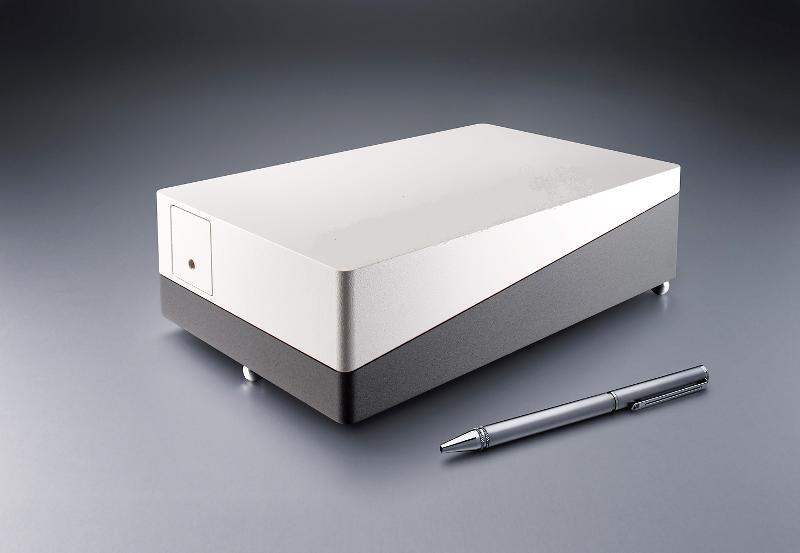 |
DPSS DMPLH lasers
DPSS DMP LH series lasers will pump your Ti:Sapphire laser.
There are LH series lasers installed all over the world pumping all makes & models
of oscillator. Anywhere from CEP-stabilized femtosecond Ti:Sapphire oscillators
to ultra-narrow-linewidth CW Ti:Sapphire oscillators. With up to 10 Watts CW
average power at 532nm in a TEMoo spatial mode, LH series
lasers has quickly proven itself
as the perfect DPSS pump laser for all types of Ti:Sapphire or dye laser.
Ideal for pumping of:
Trestles LH
Ti:Sapphire laser
T&D-scan laser
spectrometer based on narrow line CW Ti:Sapphire laser
|
 |
New laser spectrometer
T&D-scan for research that
demands high resolution and high spectral
density in UV-VIS-NIR spectral domains - now available with
new pump option!
The
T&D-scan
includes
a CW ultra-wide-tunable narrow-line laser, high-precision wavelength meter,
an electronic control unit driven through USB interface as well as a
software package. Novel advanced design of the fundamental laser component
implements efficient intra-cavity frequency doubling as well as provides a
state-of-the-art combined ultra-wide-tunable Ti:Sapphire & Dye laser
capable of covering together a
super-broad spectral range between 275 and 1100 nm. Wavelength
selection components as well as the position of the non-linear crystal are
precisely tuned by a closed-loop control
system, which incorporates highly accurate wavelength meter.Reserve a
spot in our CW lasers training
workshop in San Diego, California. Come to
learn how to build a
CW
Ti:Sapphire laser from a kit
|
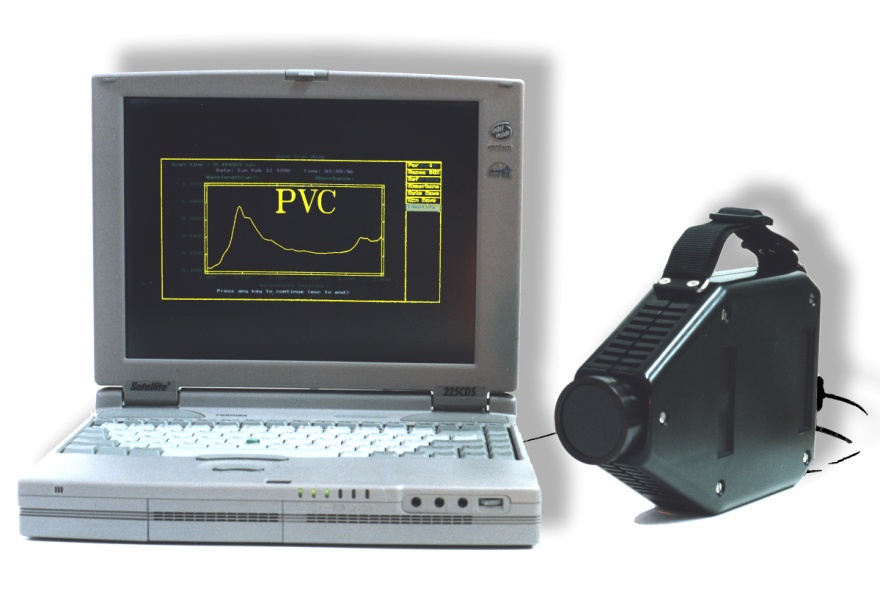 |
AOTF Infrared Spectrometer
Del Mar Photonics offer a handheld
infrared spectrometer based on the
acousto-optic tunable filter (AOTF). This instrument is about the size and
weight of a video camera, and can be battery operated. This unique, patented
device is all solid-state with no moving parts. It has been sold for a wide
variety of applications such as liquid fuel analysis, pharmaceutical analysis,
gas monitoring and
plastic analysis.
Miniature AOTF infrared spectrometer uses
a crystal of tellurium dioxide to scan the wavelength. Light from a light source enters
the crystal, and is diffracted into specific wavelengths. These wavelengths are
determined by the frequency of the electrical input to the crystal. Since there
are no moving parts, the wavelength scanning can be extremely fast. In addition,
specific wavelengths can be chosen by software according to the required algorithm, and therefore can be modified without changing the
hardware. After the infrared radiation reflects off of the sample, it is
converted into an electrical signal by the detector and analyzed by the
computer. Del Mar Photonics is looking for international distributors for
RAVEN - AOTF IR spectrometer for plastic identification and for variety of
scientific and industrial collaborations to explore futher commercial potential
of AOTF technology.
New:
AOTF spectrometer to measure lactose, fat and proteins in milk
|
 |
Open Microchannel Plate Detector
MCP-MA25/2 -
now in stock!
Microchannel Plate Detectors MCP-MA series are an open MCP detectors
with one or more microchannel plates and a single metal anode. They are intended
for time-resolved detection and make use of high-speed response properties of
the MCPs. MCP-MA detectors are designed for photons and particles detection in
vacuum chambers or in the space.
MCP-MA detectors are used in a variety of applications including UV, VUV and EUV
spectroscopy, atomic and molecular physics, TOF mass–spectrometry of clusters
and biomolecules, surface studies and space research.
MCP-MA detectors supplied as a totally assembled unit that can be easily mounted
on any support substrate or directly on a vacuum flange. They also can be
supplied premounted on a standard ConFlat flanges.
buy online -
ask for research discount!
|
 |
Hummingbird EMCCD camera
The digital Hummingbird
EMCCD camera combines high sensitivity, speed and high resolution.
It uses Texas Instruments' 1MegaPixel Frame Transfer Impactron device which
provides QE up to 65%.
Hummingbird comes with a standard CameraLink output.
It is the smallest and most rugged 1MP EMCCD camera in the world.
It is ideally suited for any low imaging application such as hyperspectral
imaging, X-ray imaging, Astronomy and low light surveillance.
It is small, lightweight, low power and is therefore the ideal camera for
OEM and integrators.
buy online |
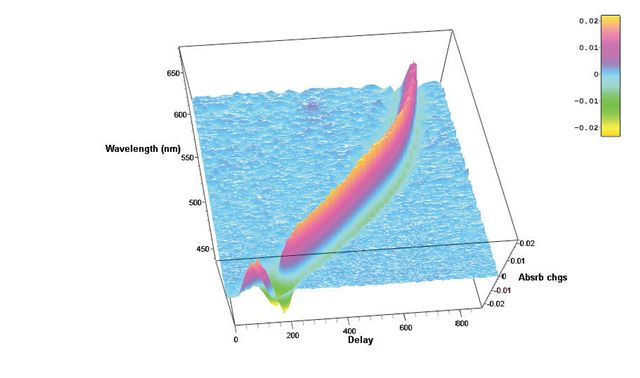 |
Hatteras-D
femtosecond transient absorption data acquisition system
Future nanostructures and biological nanosystems will take
advantage not only of the small dimensions of the objects but of the
specific way of interaction between nano-objects. The interactions
of building blocks within these nanosystems will be studied and optimized on
the
femtosecond time scale - says Sergey Egorov, President and CEO of Del Mar
Photonics, Inc. Thus we put a lot of our efforts and resources into the
development of new Ultrafast
Dynamics Tools such as our Femtosecond Transient Absorption Measurements
system Hatteras. Whether you want to
create a new photovoltaic system that will efficiently convert photon energy
in charge separation, or build a molecular complex that will dump photon energy
into local heat to kill cancer cells, or create a new fluorescent probe for
FRET microscopy, understanding of internal dynamics on femtosecond time scale
is utterly important and requires advanced measurement techniques.Reserve a
spot in our Ultrafast Dynamics Tools
training workshop in San Diego, California.
|
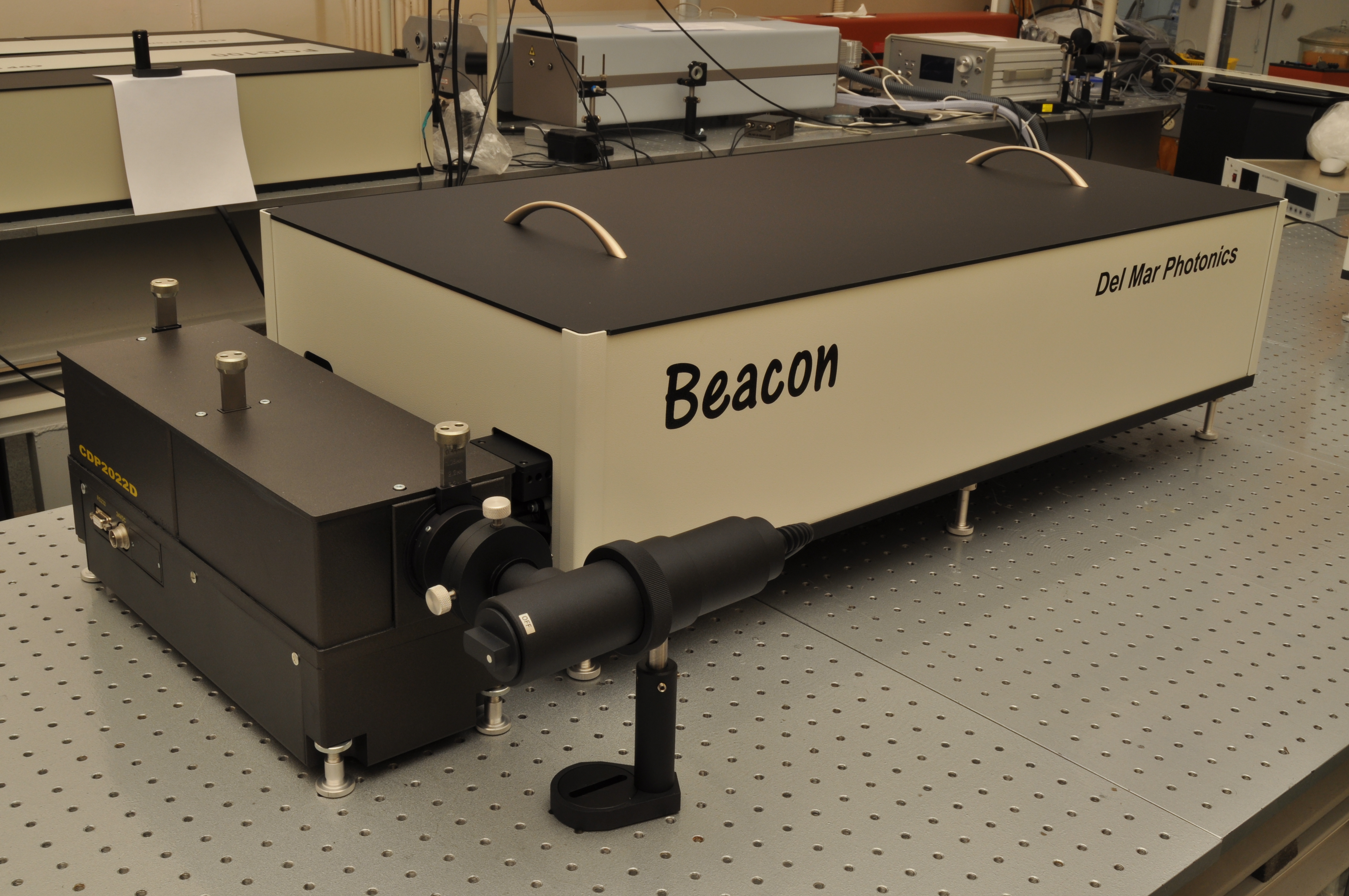 |
Beacon Femtosecond Optically Gated Fluorescence Kinetic Measurement System
-
request a quote -
pdf
Beacon together with Trestles Ti:sapphire oscillator, second and third harmonic
generators. Femtosecond optical gating (FOG) method gives best temporal
resolution in light-induced fluorescence lifetime measurements. The resolution
is determined by a temporal width of femtosecond optical gate pulse and doesn't
depend on the detector response function. Sum frequency generation (also called
upconversion) in nonlinear optical crystal is used as a gating method in the
Beacon femtosecond fluorescence kinetic measurement system. We offer
Beacon-DX for operation together with Ti: sapphire femtosecond oscillators
and Beacon-DA for operation together with femtosecond amplified pulses.
Reserve a
spot in our Ultrafast Dynamics Tools
training workshop in San Diego, California.
|
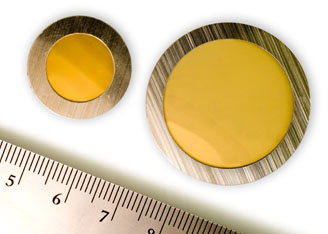 |
Terahertz systems, set ups and components
New band pass and long pass THz optical filters based on porous silicon and metal mesh technologies.
Band pass filters with center wavelengths from 30 THz into GHz range and transmissions up to 80% or better. Standard designs
with clear aperture diameters from 12.5 to 37.5 mm.
Long pass filters with standard rejection edge wavelengths from 60 THz into GHz range. Maximum transmission up to 80% or
better, standard designs at 19.0 and 25.4 mm diameters.
Excellent thermal (from cryogenic to 600 K) and mechanical properties
THz products:
THz Spectrometer kit with Antenna
THz transmission setup
THz time domain spectrometer Pacifica fs1060pca
THz time domain spectrometer Pacifica fs780pca
THz detectors: Golay cell and LiTaO3 piroelectric detectors
PCA - Photoconductive Antenna as THz photomixer
Pacifica THz Time Domain Spectrometer - Trestles Pacifica
Holographic Fourier Transform Spectrometer for THz Region
Wedge TiSapphire Multipass Amplifier System - THz pulses generation
Terahertz Spectroscopic Radar Mobile System for Detection of Concealed Explosives
Band pass filters with center wavelengths from 30 THz into GHz range
Long pass filters with standard rejection edge wavelengths from 60 THz into GHz range
Generation of THz radiation using lithium niobate
Terahertz crystals (THz): ZnTe, GaP, LiNbO3 - Wedge ZnTe
|
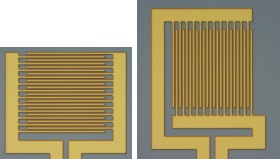 |
iPCA - interdigital Photoconductive Antenna for terahertz waves
Large area broadband antenna with lens array and high emitter conversion
efficiency
iPCA with LT-GaAs absorber, microlens array for laser excitation wavelengths
l £ 850
nm, adjusted hyperhemispherical silicon lens with a high power conversion
efficiency of 0.2 mW THz power / W optical power. The iPCA can be used also
as large area THz detector. The two types iPCAp and iPCAs have the same
active interdigital antenna area but different contact pad directions with
respect to the electrical THz field.
Interdigital Photoconductive Antenna for terahertz waves generation using
femtosecond Ti:Sapphire laser
THz books |
 |
IntraStage lowers the cost
of test data management!
Struggling with gigabytes or terabytes of test data?
IntraStage easily transforms test
data from disparate sources into web-based quality metrics and engineering
intelligence you can use.
Contact
us today to discuss your test management requirements and specifications of your
application.
|
Training Workshops
Featured Customer
 |
Trestles LH10-fs/CW laser system at UC Santa Cruz Center of
Nanoscale Optofluidics
Del
Mar Photonics offers new
Trestles fs/CW laser system which can be easily
switched from femtosecond mode to CW and back. Having both modes of operation in one system dramatically increase a
number of applications that the laser can be used for, and makes it an ideal
tool for scientific lab involved in multiple research projects.
Kaelyn Leake is a PhD student in Electrical Engineering. She graduated from
Sweet Briar College with a B.S. in Engineering Sciences and Physics. Her
research interests include development of nanoscale optofluidic devices and
their applications. Kaelyn is the recipient of a first-year QB3 Fellowship.
In this video Kaelyn talks about her experimental research in nanoscale
optofluidics to be done with Trestles LH laser.
Reserve a spot in our
femtosecond Ti:Sapphire training workshop in San
Diego, California during summer 2011 |
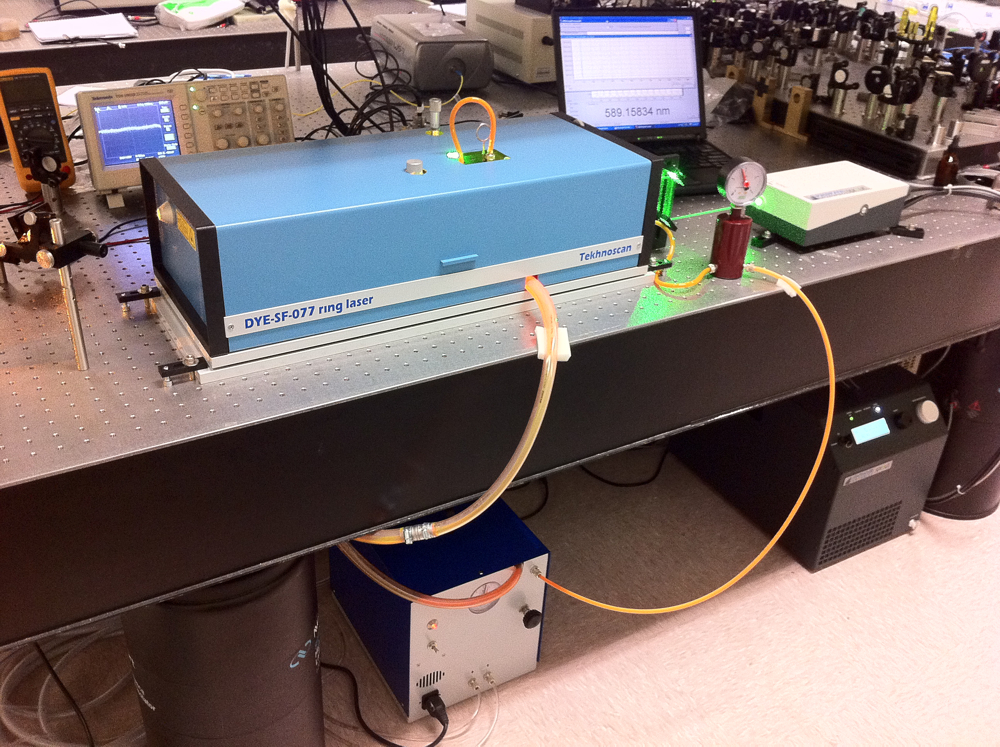 |
Frequency-stabilized CW
single-frequency ring Dye laser DYE-SF-007 pumped by DPSS DMPLH laser installed
in the brand new group of Dr. Dajun Wang at the The Chinese University of Hong
Kong.
DYE-SF-077 features exceptionally narrow generation line width, which
amounts to less than 100 kHz. DYE-SF-077 sets new standard for generation
line width of commercial lasers. Prior to this model, the narrowest line-width
of commercial dye lasers was as broad as 500 kHz - 1 MHz. It is necessary to
note that the 100-kHz line-width is achieved in DYE-SF-077 without the use of an
acousto-optical modulator, which, as a rule, complicates the design and
introduces additional losses. A specially designed ultra-fast PZT is used for
efficient suppression of radiation frequency fluctuations in a broad frequency
range. DYE-SF-077 will be used in resaerch of Ultracold polar molecules,
Bose-Einstein condensate and quantum degenerate Fermi gas and High resolution
spectroscopy |
Other News
Optical Society of Southern California meeting at UCSD OSSC 2011-04-27
Nd:YAG laser ordered by the University of Leon, UANL, Mexico
Wedge 50 Multipass Amplifier pumped with a Darwin-527-30-M DPSS Laser
ordered by Hong Kong customer
New
Trestles LH10-fs/CW femtosecond+CW laser ready for delivery to the
University of California Santa Cruz
Trestles femtosecond
Ti:Sapphire laser delivered to North Carolina State
University
Del Mar Photonics sponsor IONS (International OSA Network of Students)
conference IONS-NA-2 in Tucson, Arizona
IONS-NA-2
website
Best talk and best
poster awards at IONS-Moscow 2010 conference sponsored by Del Mar Photonics
Watch Del Mar Photonics
videos!
Del Mar Photonics is now on Twitter!
Del Mar Photonics featured components
Del Mar Photonics continuously expands its components
portfolio.

|
Solar
Prisms for Concentrating Photovoltaic Systems (CPV)
Solar cells made of compound semiconductors such
as gallium arsenide are very expensive. Usually very small cells are
installed and various means such as mirrors, lenses, prisms, etc..are used
to concentrate sunlight on the cells. Concentration photovoltaic technology
(CPV) uses the solar radiation with an efficiency of 40%, double that of
conventional solar cells
Del Mar Photonics design custom Concentrating Photovoltaic Systems (CPV) and
supply variety of the optical components for CPV such as
solar prisms shown in the picture.
hexagonal light pipes,
optical rods |
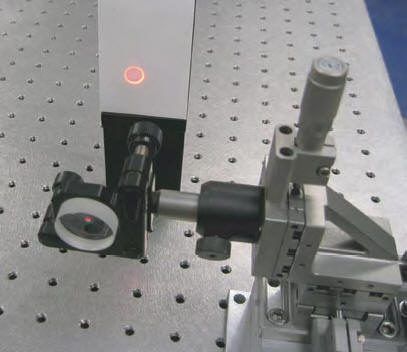
|
Axicon Lens
Axicon lens also known as conical lens or rotationally symmetric prism is
widely used in different scientific research and application. Axicon can be
used to convert a parallel laser beam into a ring, to create a non
diffractive Bessel beam or to focus a parallel beam into long focus depth.
Del Mar Photonics supplies axicons with cone angles range from 130° to
179.5° for use with virtually any laser radiation. We manufacture and supply
axicons made from BK7 glass, fused silica and other materials.
download brochure -
request a quote |
 |
Rutile (TiO2) coupling
prisms
Del Mar Photonics offers optical elements made of high quality synthetically
grown Rutile Titanium Dioxide crystals. Rutile’s strong birefringency, wide
transmission range and good mechanical properties make it suitable for
fabrication of polarizing cubes, prisms and optical isolators. Boules having
high optical transmission and homogeneity are grown by proprietary method.
Typical boules have 10 - 15 mm in dia. and up to 25 mm length. Optical
elements sizes - from 2 x 2 x 1 mm to 12.7 x 12.7 x 12.7 mm. Laser grade
polish quality is available for finished elements. So far we the largest
elements that we manufactured are 12 x15 x 5 mm, in which optical axis is
parallel to 15 mm edge, 5 mm is along beam path, 12 x 15 mm faces polished
20/10 S/D, one wave flatness, parallelism < 3 arc.min. (better specs.
available on request).
more details -
download brochure -
request a quote |
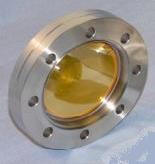 |
Vacuum viewport
Del Mar Photonics offer a range of competitively priced UHV viewports ,
Conflat, ISO or KF including a variety of coatings to enhance performance.
Del Mar Photonics viewports are manufactured using advanced techniques for
control of special and critical processes, including 100 percent helium leak
testing and x-ray measurements for metallization control. Windows Materials
include: Fused silica, Quartz , Sapphire , MgF2, BaF2, CaF2, ZnSe, ZnS, Ge,
Si, Pyrex. Standard Viewing diameters from .55" to 1.94 ".
Coating - a range of custom coatings can applied - which include
- Single QWOT
- Broad Band AR
- V coatings
- ITO
- DLC (Diamond like coating)
more
details -
request a
quote
|
 |
Hydrogen
Thyratrons are used in
such devices as radars with different power levels, high-power pulsed
technical, electrophysical, medical devices and lasers. Sophisticated
design and high quality ceramic-metal envelope determines long lifetime
and very accurate and reliable operation of hydrogen thyratrons under wide range of environmental
conditions.
Applications:
- radars
- pulsed lasers power supplies
- medical apparatus
- electrophysical instrumentation
Triggered Three-Electrode Spark Gap Switches are ceramic-metal sealed off gas
discharge trigatron-type devices with a co-axial trigger electrode. These Gas
Discharge Tubes contain no mercury and, due to an advanced design, feature high
reliability and a long lifetime being operating under wide range of
environmental conditions.
Applications:
- pulsed installation for processing materials
- installations with plasma focus
- pulse power supplies for lasers and other pulse equipment
- medical apparatus such as lithotriptors and defibrillators
- processing systems for petroleum wells |
 |
We are looking forward to hear from you and help you with
your optical and crystal components requirements. Need time to think about
it?
Drop us a line and we'll send you beautiful Del Mar Photonics mug (or
two) so you can have a tea party with your colleagues and discuss your
potential needs. |
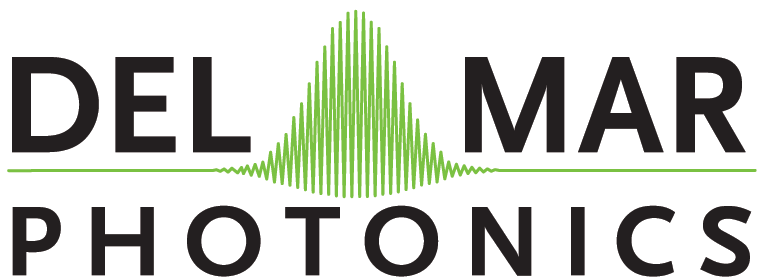
Del Mar Photonics, Inc.
4119 Twilight Ridge
San Diego, CA 92130
tel: (858) 876-3133
fax: (858) 630-2376
Skype: delmarphotonics
sales@dmphotonics.com
















